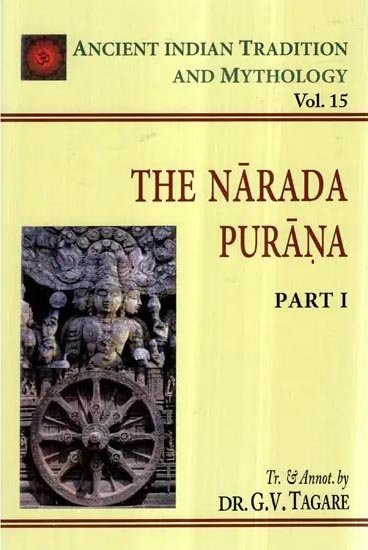Narada Purana (English translation)
by G. V. Tagare | 1950 | 14,468 words | ISBN-10: 8120803477 | ISBN-13: 9788120803473
This page describes 1.3. Purana Panca-Lakshana of the English translation of the Narada Purana—an ancient Sanskrit text within Hindu literature categorized as one of the eighteen Mahapuranas. It explores various aspects of cosmology, ethics, and rituals, compiling rich narratives that emphasize devotion to Vishnu and the concepts of Dharma (righteousness) and Bhakti (devotion). The Narada Purana also addresses Tantric practices, philosophical discourses on Yoga and self-realization.
Go directly to: Footnotes.
1.3. Purāṇa Pañca-Lakṣaṇa
[Full title: The Nāradīya Purāṇa and its place in the evolution of the Purāṇa literature: (3). Purāṇa Pañca-Lakṣaṇa]
As stated above, the five characteristics, viz., Sarga (creation), Pratisarga (Re-creation after dissolution), Vaṃśa (genealogy), Manvantaras and Vaṃśānucarita (Saga of the dynasties of kings and sages) came to be looked upon as sine qua non of Purāṇas. Not merely Amara Siṃha (5th cent, a.d.) in the Amara-kośa but Purāṇas themselves (e.g. Agni Purāṇa 1.14, BD.P. I 1.37.38, Garuḍa Purāṇa 1.215.11, Kūrma Purāṇa I.1.12, Matsya Purāṇa 53.65, SK. V. 1.37) have endorsed this Pañca-lakṣaṇa definition of Purāṇas, viz.,
sargaś ca pratisargaś ca vaṃśo manvantarāṇi ca /
vaṃśyānucaritaṃ caiva purāṇam pañca lakṣaṇam //
This enumeration of characteristics of Purāṇas is not strictly a definition as it does not record the differentia of Purāṇas; nor is there any invariable concomitance. On the contrary, as noted by Pusalkar “Pañca-lakṣaṇa occupies as insignificant part (about 1/40) of the extant Purāṇas.”[1]
The analysis of the contents of the Mahāpurāṇas in Nāradīya or Nārada Purāṇa I. Chs. 92-109 (and annotations thereon) shows that the extant Purāṇas (with the exception of Viṣṇu Purāṇa and Kūrma Purāṇa) generally do not conform to the Pañca-lakṣaṇa definition (vide infra Nārada Purāṇa and the five characteristics of Purāṇas). The problem is: why Purāṇas have been associated with the five characteristics in public mind though many of them do not conform to them and some Purāṇas such as the Bhāgavata Purāṇa and Nārada Purāṇa.II.82.30, (unsuccessfully) claim themselves to have ten characteristics—and even when they incorporated much more material than could be covered in the “Ten characteristics.”
A review of the evolution of Purāṇas shows that from the days of Kauṭalīya Arthaśāstra (c. 300 b.c.)[2] to the days of Viṣṇu Purāṇa (100-300 a.d.), the five characteristics from Sarga (creation) to Vaṃśānucarita (the saga of the dynasties of kings) were probably prominent in the then current Purāṇas and the Pañcalakṣaṇa definition became permanently associated with Purāṇas—even in the minds of the (non-conformist) authors of the Purāṇas themselves.
Footnotes and references:
[2]:
vide Kane—History of Dharma Śāstra V. ii. 818-819 and his conclusion about the existence of Purāṇas resembling the extant ones before the Mahābhārata (ibid., p. 821).
